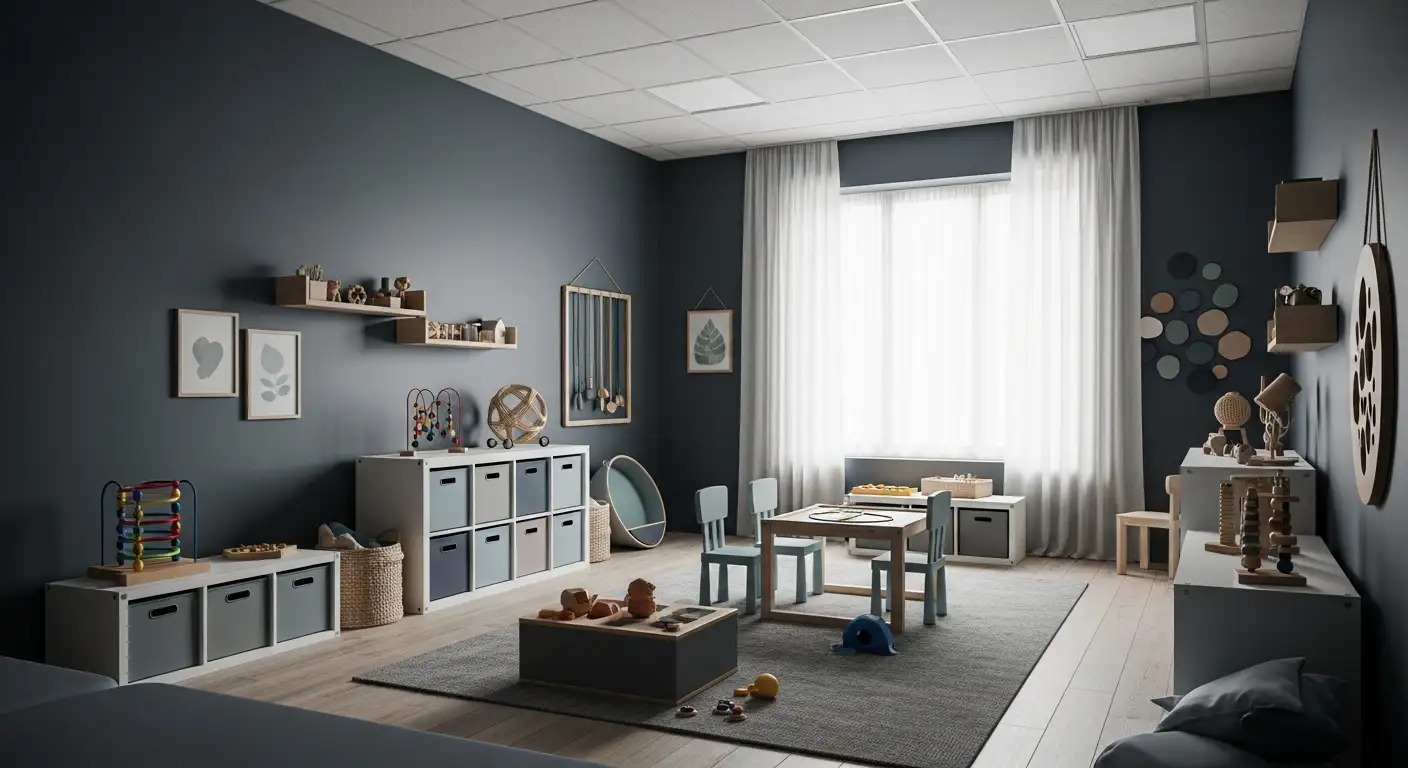Understanding the Significance of Flexibility in Child Development
Flexibility in play and routines is a cornerstone of healthy child development, fostering emotional resilience, problem-solving skills, and creativity. By gradually introducing adaptable activities and modeling flexible behavior, caregivers and educators can help children navigate an unpredictable world effectively. This article explores comprehensive strategies, activities, and guidance to cultivate flexible thinking and adaptable routines among children, including those with special needs, to support their overall growth and well-being.
Designing Flexible and Engaging Schedules
 Creating routines that foster flexibility involves designing systems that actively engage children and encourage adaptable thinking. One effective approach is to incorporate tools like checklists, moving objects, or even turning pages, which require children to participate actively rather than passively follow a schedule. This physical engagement helps children remain attentive and adapt more easily to changes.
Creating routines that foster flexibility involves designing systems that actively engage children and encourage adaptable thinking. One effective approach is to incorporate tools like checklists, moving objects, or even turning pages, which require children to participate actively rather than passively follow a schedule. This physical engagement helps children remain attentive and adapt more easily to changes.
In addition, routines should include frequent and sometimes unpredictable modifications, including last-minute adjustments or day-to-day changes. Such variability teaches children to be comfortable with uncertainty and develop resilience. An effective way to do this is by starting with positive, manageable changes like minor schedule shifts, gradually progressing to more challenging modifications.
Practical ideas for implementing flexible routines and play activities include offering open-ended options such as creative art projects or storytelling that children can interpret or change as they see fit. Varying routines periodically with surprise elements or small modifications, like swapping the order of activities or introducing new tools, also promotes adaptability. Visual schedules and cues can guide children through transitions smoothly. During play, encouraging improvisation with pretend toys, building blocks, or open-ended tasks allows children to explore multiple solutions, fostering creative and flexible thinking.
Incorporating outdoor exploration, simple science experiments, or cooking activities further stimulates curiosity and problem-solving skills. These hands-on experiences support the development of cognitive flexibility and help children learn to manage unexpected changes with confidence.
The goal is to make routines predictable yet flexible enough to adapt, nurturing a mindset that embraces change as part of learning and growth.
The Critical Role of Flexibility in Development
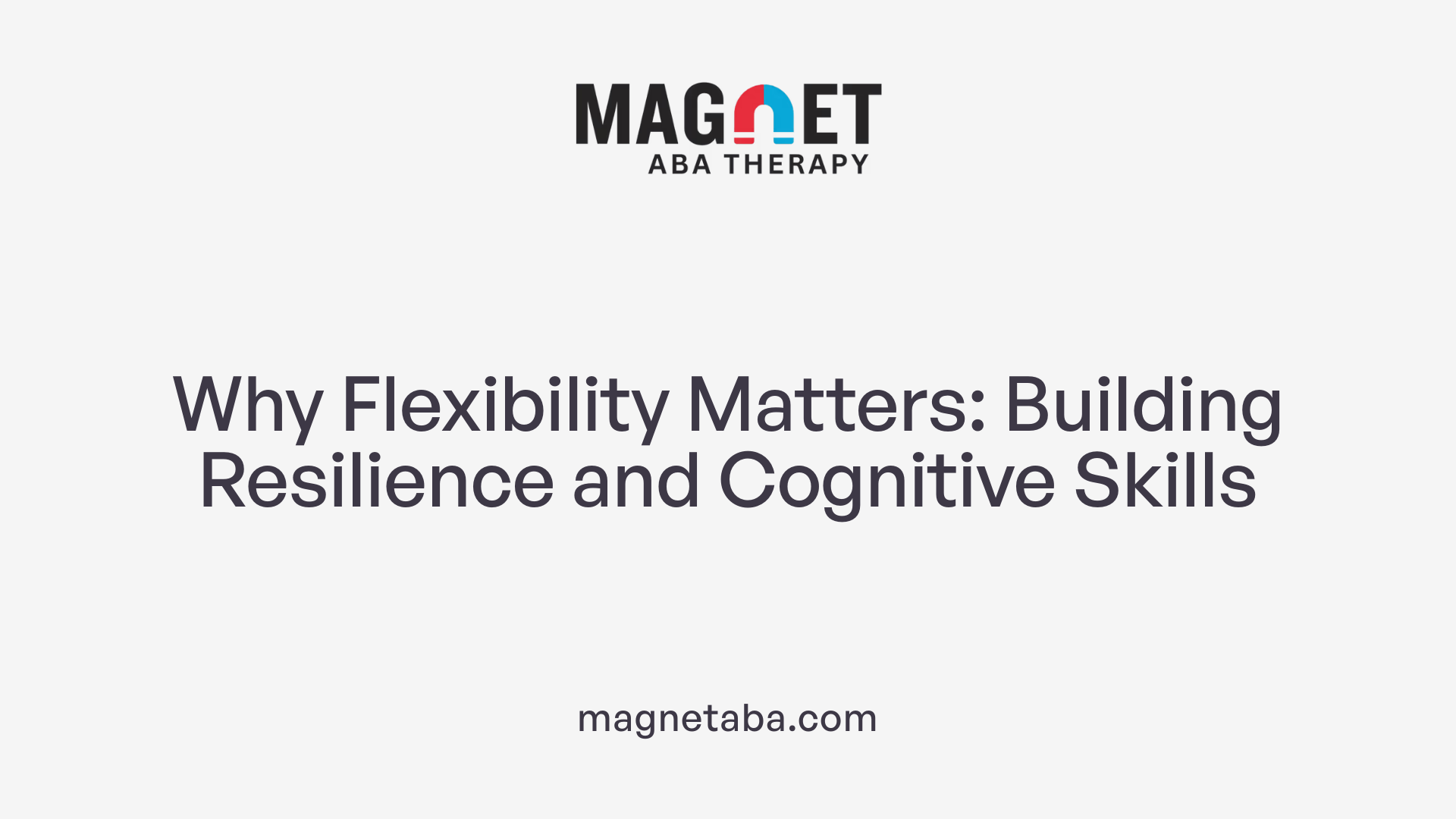
Why is flexibility in play and routines important for children's development?
Creating flexible routines and engaging in adaptable play are fundamental in fostering healthy development in children. When schedules include active participation through checklists, moving objects, or turning pages, children are encouraged to stay actively engaged, which promotes flexibility.
Introducing regular, sometimes unexpected, changes such as last-minute modifications helps children learn to adapt and manage transitions smoothly. Starting with positive adjustments, then neutral, followed by more challenging ones, gradually builds their comfort with change.
Frequent variation of activities, instructions, and materials prevents routines from becoming monotonous or fixed, further developing cognitive flexibility. Visual aids should be designed to guide children on what to do rather than memorize routines, encouraging problem-solving and independent thinking.
Practicing flexible interactions early—like sharing toys in different ways or exploring with varied materials—helps children accept diverse approaches, reducing stress when transitions occur. These strategies teach children to expect and adapt to an unpredictable world, which is essential for children with autism.
Flexible thinking, or mental flexibility, allows children to shift their mindset in response to new information or unforeseen circumstances. This skill is vital for handling disappointment and managing uncertainty. Children who develop this ability tend to be less overwhelmed by setbacks and more adept at finding alternative solutions.
Activities such as building, art projects, role-playing, story adaptations, or exploring nature can stimulate flexible thinking. These activities encourage children to consider multiple perspectives and approaches, fostering creativity and problem-solving.
Parents and caregivers can support flexible thinking by modeling adaptable behavior, validating emotions, and involving children in solution-finding. Incorporating resources like visual schedules, routine stories, and interactive games helps children build resilience and confidence.
Overall, promoting flexibility through diverse strategies enhances children's emotional resilience, problem-solving skills, and ability to navigate a constantly changing environment. These skills are foundational for their social-emotional development, independence, and lifelong learning.
Guidance for Caregivers and Educators
To foster flexibility in children, caregivers and educators should employ a variety of strategies that build resilience and adaptive thinking.
First, modeling flexible behavior is essential. When adults demonstrate calm problem-solving, patience, and openness to change, children learn by example. Engaging in activities like storytelling, role-playing, and problem-solving scenarios encourages children to think creatively and adaptively.
Gradually introducing routine modifications helps children become comfortable with change. Starting with positive or neutral adjustments and gradually moving to more challenging variations allows children to build confidence in their ability to handle unpredictability.
It is also important to validate children's emotions when routines shift. Acknowledging feelings of frustration or confusion, while guiding children to respond with understanding and patience, fosters emotional regulation.
Providing choices within routines and tweaking activities slowly over time enables children to practice adaptability without feeling overwhelmed. For example, allowing children to select the order of activities or decide how to approach a task helps them develop a sense of control and flexibility.
Teaching children to distinguish between flexible thinking and inflexible reactions enhances emotional resilience. When things don't go as planned, guiding children to consider alternative solutions promotes problem-solving skills.
Integrating patience, kindness, and a growth mindset into daily interactions supports their overall development. Activities such as building, art projects, and story variations can reinforce flexible thinking.
For additional support, many resources are available. Visual tools, interactive games like 'Making It Work,' calming routines, and themed printables help children understand and adapt to change.
In sum, consistently demonstrating flexible behavior, gradually modifying routines, and validating emotions are effective ways to help children, especially those with autism or emotional challenges, develop the ability to adapt to an unpredictable world.
Activities Promoting Flexible Thinking
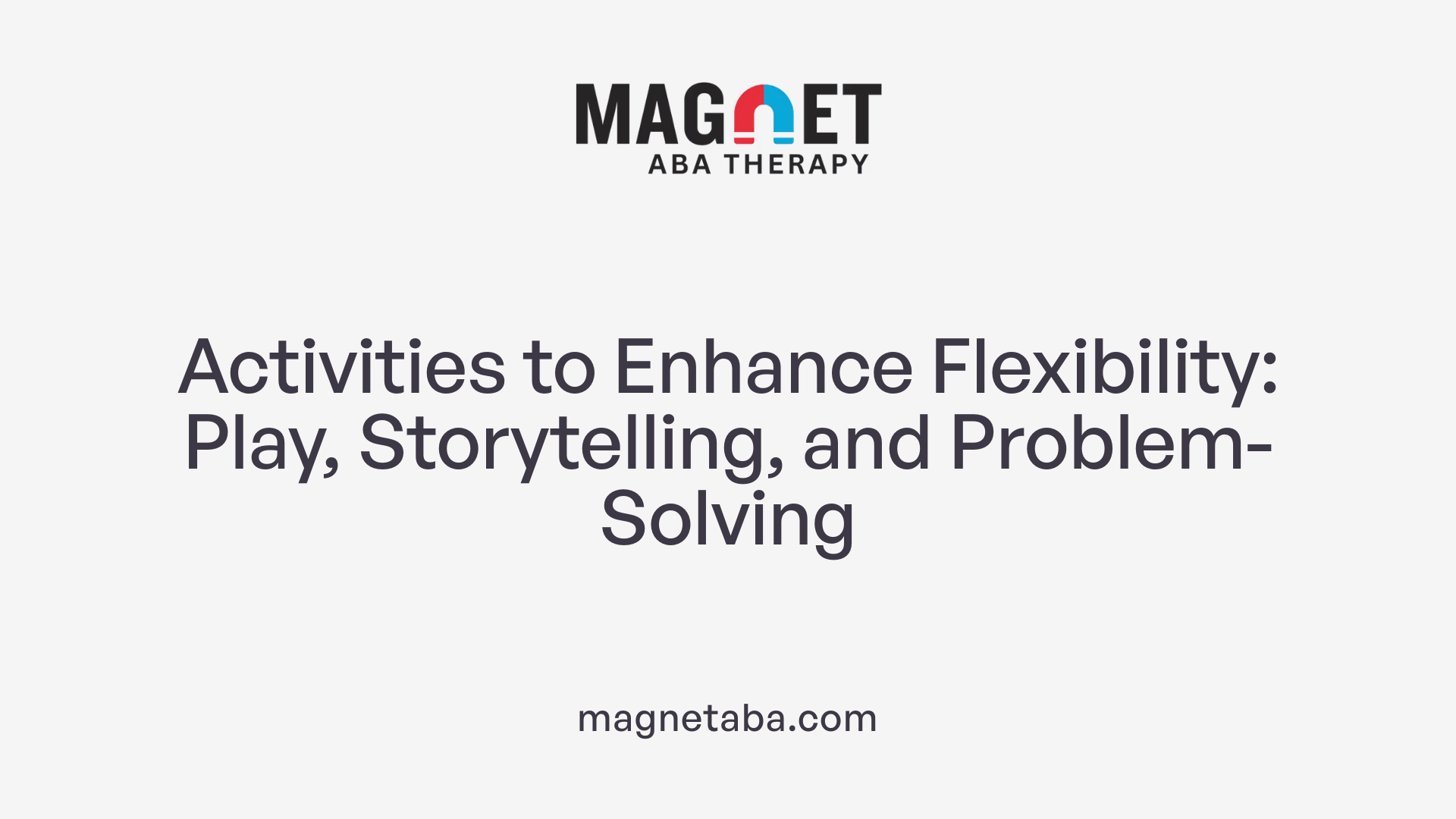
What activities can help develop flexible thinking in children?
Developing flexible thinking is essential for children to handle change, solve problems, and think creatively. Several engaging activities can support this developmental goal.
One effective approach involves open-ended play and problem-solving tasks. These activities encourage children to explore multiple solutions and viewpoints, fostering an adaptable mindset. For example, building projects with blocks or creating art with no fixed outcome allow children to experiment and rethink their approaches.
Pretend play, role-playing, and improvisation games are also valuable. They invite children to imagine diverse scenarios and adapt their behavior as roles or settings change. These activities not only boost creativity but also teach children to adjust quickly to new ideas.
Incorporating games that involve changing rules and storytelling can further promote cognitive flexibility. For instance, changing the rules of a familiar game or altering the story's ending prompts children to think beyond initial expectations. Puzzles that challenge logic or word games that require alternative strategies support mental adaptability.
Visual challenges, such as optical illusions or drawing tasks that demand flexible approaches, help children learn to see situations from different perspectives. These exercises build mental flexibility and problem-solving skills.
Modeling flexible thinking is equally important. Caregivers and educators can demonstrate adaptive behavior and reinforce a positive attitude toward change by revisiting rules, exploring new ideas, and openly discussing different ways to complete tasks.
Creating an environment that values creativity, embraces mistakes, and encourages trying new strategies significantly enhances a child's ability to think flexibly. Together, these activities and attitudes help children navigate an unpredictable world with confidence and resilience.
Making Routines Adaptable and Promoting Play Flexibility
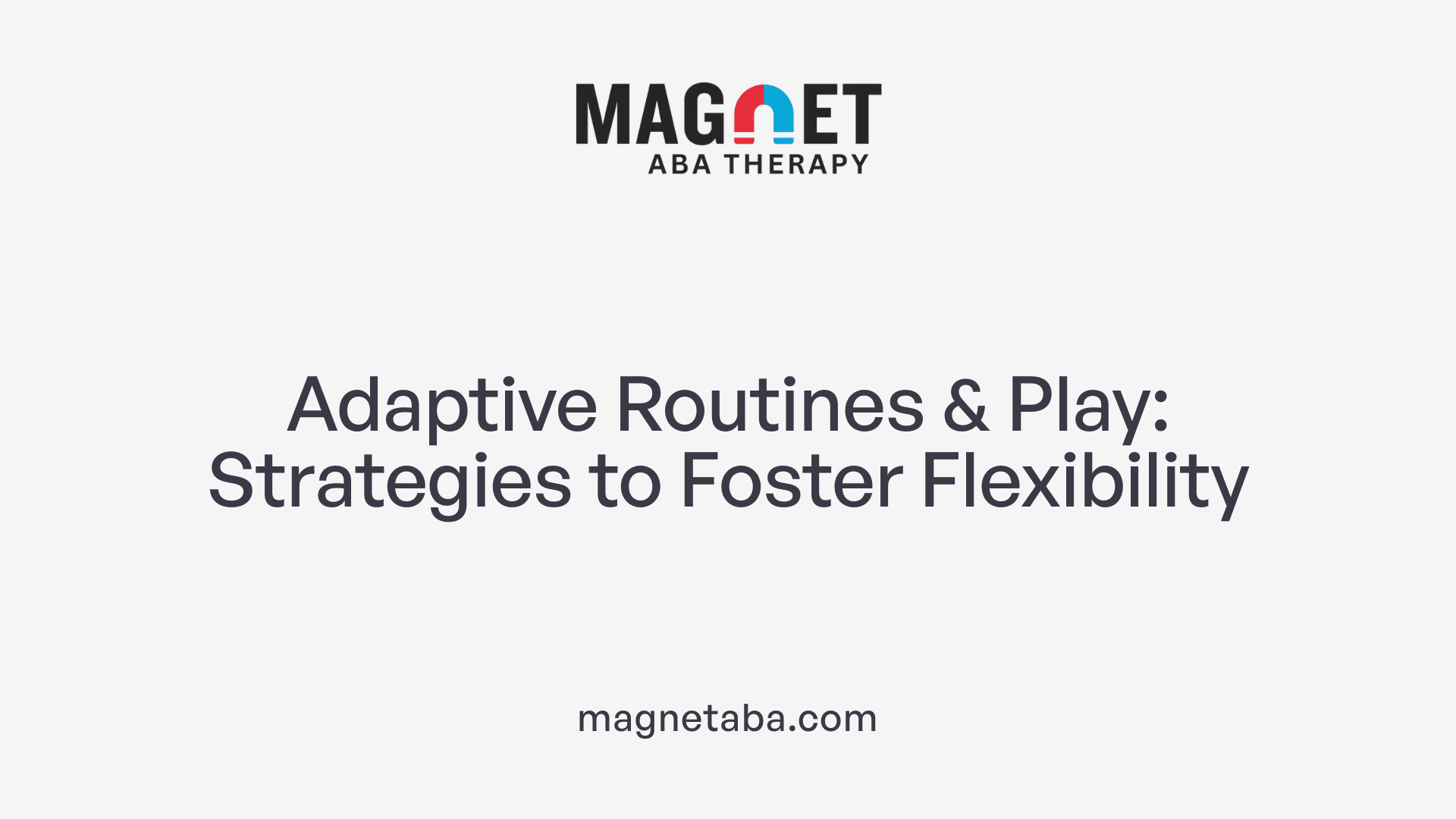
How can routines be designed to be adaptable and foster flexible play?
Creating routines that are both consistent and adaptable is essential for helping children, especially those with autism, develop flexibility. One effective approach is to incorporate choices within routines, giving children options on activities or the sequence they follow. Visual supports like picture schedules or cues can guide children through routines while allowing for adjustments.
Introducing novelty gradually makes routines more dynamic. This can be done by varying activities, changing materials, or altering the sequence slightly to keep children engaged and open to new experiences. Engaging children in role-play and storytelling activities encourages them to see different perspectives and practice shifting their thinking.
Skill-building games like switching rules during play can help children learn how to handle change practically. For example, they might learn to adapt when the rules of a game are modified, preparing them for real-world changes.
Practicing flexible thinking through modeling and problem-solving involves parents and teachers demonstrating adaptable behaviors and helping children find solutions to unexpected situations. Turning daily chores into playful routines—such as turning cleaning into a game—can make flexibility a natural part of everyday life.
Supporting independence and providing positive feedback build confidence and self-regulation, allowing children to handle spontaneous changes more comfortably. Overall, combining stability with opportunities for variation helps children become better at adapting to new situations and encourages playful exploration.
Strategies for fostering flexibility in children's routines and play
| Strategy | Description | Example |
|---|---|---|
| Incorporate Choices | Let children select activities or order of tasks | Picking between two storybooks to read |
| Use Visual Supports | Visual cues to guide and adapt routines | Picture schedules for bedtime |
| Vary Activities | Gradually add variation in activities | Changing art materials or game rules |
| Role-Play and Storytelling | Practice perspective taking and scenario understanding | Acting out everyday situations |
| Rule-Switching Games | Teach flexibility through game rules | Playing 'Simon Says' with varied commands |
| Modeling Flexible Thinking | Demonstrate adaptable behavior to children | Showing how to handle surprise changes |
| Turn Chores into Play | Make daily tasks fun and spontaneous | Singing while tidying up |
| Reinforce Success | Offer positive feedback to boost confidence | Praise for trying a new activity |
Why developing flexible routines and play is beneficial?
Encouraging adaptable routines and play activities helps children learn to manage unpredictability and fosters resilience. When children practice shifting their approach in safe environments, they become more comfortable with change in broader contexts.
Combining these strategies supports cognitive flexibility, which is crucial for problem-solving, social skills, and emotional regulation. As children develop these abilities, they are less likely to feel overwhelmed or frustrated by unexpected changes.
By integrating choices, visual supports, and varied activities into daily routines, caregivers help children experience a balanced mix of stability and novelty. This approach nurtures independence, creativity, and adaptability—skills that are vital for navigating an ever-changing world.
Strategies for Effective Teaching of Flexibility
What are effective strategies to teach flexibility in play and routines for children?
Teaching children to be flexible involves various practical strategies that foster adaptive thinking and resilience. One effective approach is modeling flexible behavior. Caregivers and educators can demonstrate how to adapt by thinking aloud during activities, sharing their thought process when plans change, or when troubleshooting problems. This helps children observe and imitate adaptive strategies.
Incorporating choices into routines allows children to practice decision-making and feel more in control of their day. For example, offering two options for activities or selecting between different materials encourages them to adapt comfortably and find new ways to engage.
Creating opportunities for exploration and discovery also cultivates flexibility. Activities like role-playing, solving puzzles, or engaging in 'what if' scenarios challenge children to think creatively and handle unexpected events.
Gradually tweaking routines is another effective method. Changes such as altering the order of tasks, introducing new activities, or modifying the environment encourage children to adjust without feeling overwhelmed. Visual supports like picture schedules or cue cards can guide children through changes, making transitions smoother.
Further, activities like storytelling with alternative endings, building projects, or the use of ‘Yes, and…’ game formats promote flexible thinking by encouraging children to consider multiple perspectives and solutions.
Finally, involving children in planning routines and explaining why changes occur can foster understanding and a sense of security. Open communication and encouragement help children see change as a normal part of life and develop their capacity to adapt.
| Strategy | Description | Benefits |
|---|---|---|
| Model flexible behavior and think aloud | Demonstrate how to adapt and solve problems in real-time | Teaches children through observation |
| Incorporate choices and exploration | Offer options within routines and activities for decision-making | Builds confidence and decision skills |
| Gradually tweak routines | Change the order or content of daily activities steadily | Reduces anxiety around change |
| Use visual supports | Visual aids to prepare children for transitions | Makes changes predictable and understandable |
| Engage in imaginative play and problem-solving | Include scenarios that require flexible solutions | Strengthens cognitive flexibility |
By implementing these strategies, caregivers can help children develop the ability to adapt to change, which is especially important in autism interventions. The combination of modeling, choices, exploration, and visual supports creates a supportive environment for children to become more flexible and resilient in their daily lives.
Supporting Children with Special Needs in Developing Flexibility
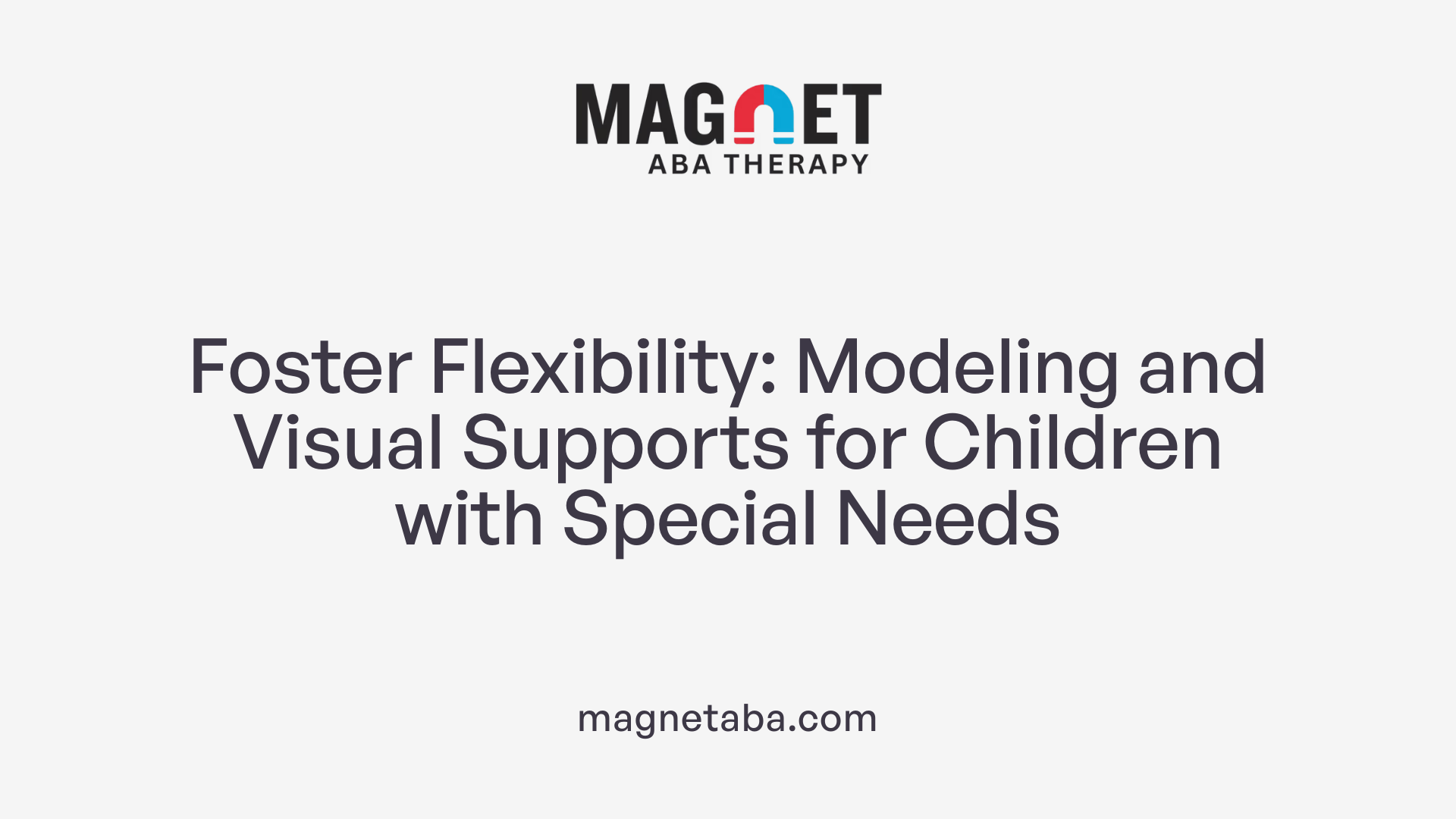
How can adults model and support flexibility in children, including those with special needs?
Adults play a crucial role in fostering flexibility by demonstrating adaptable behavior themselves. When caregivers show that they can handle change calmly and positively, children learn to imitate this approach, gradually adopting more flexible thinking.
Creating a supportive environment is also essential. This involves maintaining a predictable routine while subtly introducing small, manageable changes. Such gradual modifications help children, especially those with special needs, become comfortable with change without feeling overwhelmed.
Visual supports are powerful tools in easing transitions. Visual schedules, pictorial instructions, and metaphors help children anticipate upcoming changes, reducing anxiety and confusion. For example, using a picture chart to outline the daily routine can prepare a child for adjustments.
Integrating play activities tailored to promote flexibility enhances learning. Activities like storytelling with altered endings, role-playing with changing scenarios, or inventive reuse of objects encourage children to explore different ways of thinking and problem-solving.
Understanding each child's individual sensitivities and triggers is vital. Some children may be more distressed by routine disruptions; thus, adults need to customize strategies accordingly. By validating emotions and offering choices, caregivers can help children build resilience and adaptive skills.
Overall, supporting flexibility in children, especially those with special needs, requires patience, creativity, and a personalized approach. Combining modeling with environmentally supportive tools and activities fosters an enriching setting where children learn to navigate change confidently.
Cultivating Flexibility for Lifelong Benefits
Fostering flexibility in play and routines is vital for nurturing adaptable, resilient, and confident children. By using practical strategies such as modeling flexible behavior, incorporating adaptive activities, and gradually introducing change, caregivers and educators can equip children with essential skills to navigate an ever-changing world. Supporting children with diverse needs through tailored approaches, visual supports, and positive reinforcement ensures inclusivity and promotes emotional and cognitive growth. Emphasizing patience, creativity, and consistent practice transforms routines and play into valuable opportunities for development, helping children thrive both socially and academically now and in the future.
References
- Creating Autism Interventions that Promote Flexibility
- Strategies for Cultivating Flexible Thinking in Young Learners
- Helping Kids With Flexible Thinking
- Building a Skillset for Flexible Thinking
- Helping Kids With Flexible Thinking
- Strategies for Cultivating Flexible Thinking in Young Learners
- Balancing Routine and Flexibility: Creating a Structured ...



